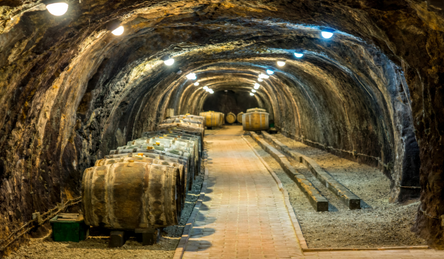Hungarian Oak: Winemaking’s Best-Kept Secret
Aug 4th 2023
Wine flavoring is not only influenced by the quality of grapes or the length of the fermentation process but also the way the wine is stored. This was considered during the production of the award-winning, new release HWSD Companion Vintage #3.
Wine Barrel Basics
Wine can be aged in a wide range of vessels—stainless steel, glass, or wooden barrels; this is the most traditional and time-honored option. American and European oak have long been regarded as essential components of barrel-making for several reasons. First, the texture of the wood allows it to be molded with heat to create tight structures that prevent leakage. At the same time, oak also allows small amounts of oxygen to seep through, expediting the aging process and creating smooth-tasting wine. Finally, the wood adds unique aromas to wine such as vanilla, chocolate, fruits, and/or spices.
Different Oak Species and Characteristics
The location from which the oak is grown greatly affects its quality and characteristics. Oak is sourced from two regions: American oak is harvested in Eastern and Central North America and is most frequently used for more robust, full-bodied wines. European oak can be found in France, Hungary, and Croatia, and is used for lighter profiled wines. There are two oak species native to Europe. Q. Robur requires more generous growing conditions and has a rigid tannin structure. Q. Petrea grows in tougher, drier conditions and offers more aromatic, elegant notes.
Hungary has become an increasingly popular location for barrel production, as its two primary oak-producing forests contain both oak tree species. In southern Hungary, the Mecsek forest boasts a comfortable wet climate with nutritious soil, an ideal terrain for both species of oak. Wine stored in oak from the Mecsek forest tends to mature more rapidly due to the greater amount of oxidation occurring within the barrels.
The Zemplen forest of northeastern Hungary is known for providing the best oak for cooperage, or aging. The climate is home to volcanic debris and colder temperatures– the ideal environment for Q. Petrea to grow. Hungarian Q. Petrea is distinguished from French or Croatian strains by its smooth tannins. This slow-growing, complex oak species accounts for 95% of the total oak population in this forest. This is an extraordinarily high percentage, especially given the maturation rate of oaks—it takes up to 120 years for oak to be ready for barrel production. Hungary maintains a sustainable ecosystem by requiring tree replantation to increase the overall forest area.
From a Tree to a Barrel
After the trees are harvested, it is time to cooper the oak. Cooperage refers to the process of aging the oak. First, the wood is heated and molded into a half-barrel formation. The barrels can be sourced from one species of oak or a mix of both. Then the staves (individual oak planks) are aged in an open-air climate or a kiln for a few months to up to three years. This process helps to lessen the tannins, develop aromas, and dry out the wood. To season the oak, the wood is then toasted. A flame is lit within the half-barrel, slowly burning until the desired level of color is achieved. The toasting process helps develop flavors such as cinnamon, chocolate, and clove. Once wine enters the barrels, it becomes infused with 70% of these oak flavors and textures within the first year.
Hungarian Barrels Used for Companion #3
With over 120 years of experience in the cooperage industry, Hungary sells nearly 50,000 oak barrels a year, exporting to reputable vineyards in Burgundy, Tuscany, and California. Just as it is essential to harvest grapes from the highest quality vineyards, winemakers must also consider the optimal selection for their barrels.
Barrel influence was what led to the wonderful sensation that is the limited edition HWSD Companion #3 Cabernet Sauvignon. This medium-bodied wine was aged for 18 months in new Hungarian Oak Barrels and features a mouthful of smoked wood and freshly crushed berries. The wine was produced in small batches with the utmost attention and care. Producing only two barrels and 523 bottles, this wine is a rarity you won’t want to miss out on.

